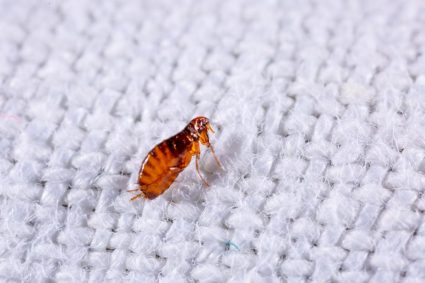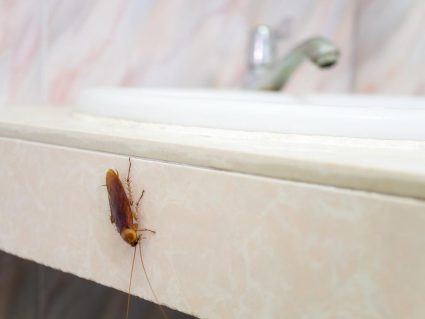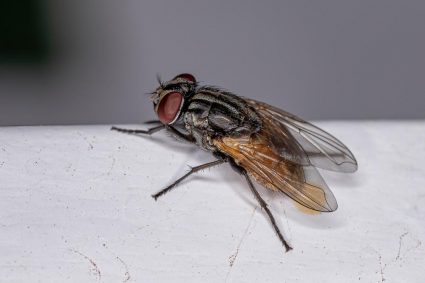
Fleas are a common menace for pet owners. They not only cause discomfort for your pets but can also infest your home, leading to a frustrating battle. Many pet owners turn to trusted products like Frontline to combat these tiny pests. But what if Frontline doesn’t work? Don’t worry; there are numerous alternatives and methods you can use to get rid of fleas. This comprehensive guide will walk you through them.
If Frontline doesn’t work to get rid of fleas, consider switching to a different topical product such as Advantage, K9 Advantix, or Revolution. You could also try flea collars, oral medications, or sprays. Natural methods include using a dish soap trap, essential oils, regular vacuuming, washing pet bedding, and using diatomaceous earth. Always remember to consult your veterinarian for the best solution for your pet.
Why Might Frontline Not Work?
Frontline, while usually effective, might not work for several reasons:
- Incorrect application: If the flea treatment is not applied correctly, its effectiveness can be significantly reduced.
- Severe infestation: If the flea infestation is heavy, it may take longer to see results, as the treatment only affects adult fleas, not the eggs, larvae, and pupae already present in the environment.
- Flea immunity: Over time, fleas can develop resistance to certain chemicals, such as fipronil, the key ingredient in Frontline.
- Frequent washing: If your pet is washed too frequently, the effectiveness of the treatment can be reduced.
- Misdiagnosis: Itchiness in pets can be caused by various factors, not just fleas. Other causes can include allergies, skin infections, other parasites, and anxiety.
Alternative Flea Treatments to Consider
If Frontline doesn’t work for your pet, don’t panic. Many alternative flea treatments can be just as effective, if not more so.
Switch to Another Topical Product
Other commercial topical flea control products, like Advantage, K9 Advantix, and Revolution, contain different chemicals that may be more effective in controlling fleas.
Try Flea Collars
Flea collars, such as Seresto, can provide long-lasting protection (up to 8 months) and are generally more affordable than Frontline.
Oral Medications
Oral medications like Capstar or NexGard can be highly effective. NexGard, for example, has been shown to be 99.9% effective compared to 88.4% for topicals.
Use Sprays
Sprays containing permethrin (which kills adult fleas) and methoprene (which kills eggs, larvae, and pupae) can be used to treat your pet and its environment.
Consult Your Veterinarian
If you’ve tried multiple alternatives and still have a flea problem, it’s essential to consult your veterinarian for further advice and recommendations.
Natural Methods to Get Rid of Fleas
If you prefer a more natural approach, consider the following methods:
- Dish soap trap: Fill a shallow dish with warm water and a few drops of dish soap. Place the dish in areas where you suspect flea activity. The soap will break the surface tension of the water, causing the fleas to drown.
- Essential oils: Some essential oils, such as citronella, eucalyptus, peppermint, and tea tree, can help repel fleas.
- Regular vacuuming: Vacuum your home frequently, especially carpets, furniture, and pet bedding, to remove fleas and their eggs.
- Washing pet bedding: Wash your pet’s bedding in hot water weekly to kill fleas and their eggs.
- Diatomaceous earth: Food-grade diatomaceous earth can be sprinkled around your home to help control fleas.
Always consult with your veterinarian before using any natural flea treatments to ensure they are safe and appropriate for your pet’s specific needs.
Preventive Measures to Keep Fleas at Bay
Prevention is always better than cure. Here are some preventive measures to stop fleas from infesting your pets:
- Regular grooming: Comb your pet’s fur regularly with a fine-toothed flea comb to remove fleas and their eggs.
- Clean environment: Keep your home clean and vacuum regularly.
- Treat pets year-round: Administer flea prevention medication to your pets all year round.
- Consult your vet: Regularly consult with your vet to ensure your flea prevention methods are working.
Remember, dealing with a flea infestation requires patience and persistence. By following these steps, you can protect your pet and home from these bothersome pests.
Frequently Asked Questions
How long does it take for a flea treatment to work?
The time it takes for a flea treatment to work can vary based on the product and the severity of the infestation. Typically, topical treatments like Frontline start killing fleas within 4 hours and can eliminate up to 100% of adult fleas within 12 hours. Oral medications often work faster, killing fleas within 30 minutes to an hour.
Are there any side effects to using flea treatments?
Side effects from flea treatments are generally rare but can occur. These can include skin irritation, vomiting, diarrhea, loss of appetite, or lethargy. If you notice any adverse reactions in your pet after applying a flea treatment, consult your vet immediately.
Can I use multiple flea treatments at the same time?
It’s generally not recommended to use multiple flea treatments at the same time without consulting your vet first. Combining treatments can potentially lead to an overdose of certain chemicals, which can be harmful or even fatal to your pet.
How often should I apply flea treatment?
The frequency of application depends on the specific product used. Some treatments need to be applied monthly, while others might last for several months. Always follow the manufacturer’s instructions for the specific product you’re using.
Can I use the same flea treatment for my dog and cat?
No, not all flea treatments are safe for both dogs and cats. Some products, especially those containing permethrin, can be highly toxic to cats. Always check the product label to ensure it’s safe for the specific type of pet you’re treating.












